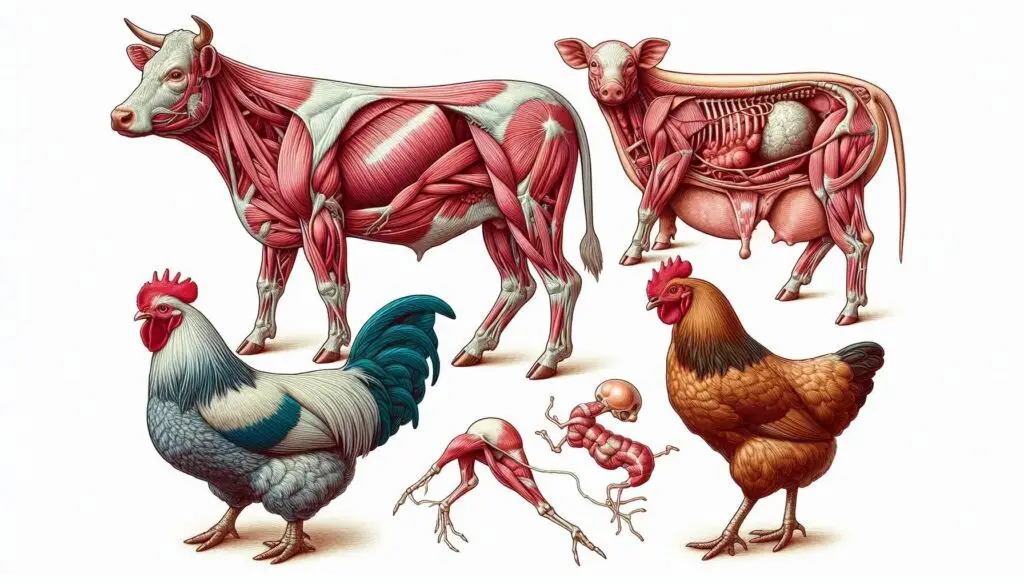Farm Animal Nutrition and Environment

Farm animals are essential to agriculture, providing meat, milk, and other products. However, their productivity is not solely determined by genetics or management practices. The physical environment plays a crucial role in shaping their nutritional needs and overall health. Understanding these relationships can help farmers optimize livestock production.
Understanding the Physical Environment
What is the Physical Environment?
The physical environment includes all external conditions that affect living organisms. For farm animals, this encompasses temperature, humidity, ventilation, and housing conditions. Each of these factors influences how animals grow, reproduce, and produce.
Why Does the Environment Matter?
Farm animals thrive best in specific environmental conditions. When these conditions deviate from their ideal range, animals may experience stress. Stress can lead to reduced feed intake, lower growth rates, and decreased reproductive success. Thus, understanding the physical environment is vital for enhancing farm animal productivity.
The Role of Temperature in Nutrition
Thermal Comfort Zones
Animals have a thermal comfort zone where they can maintain optimal body temperature without excessive energy expenditure. This zone varies by species. For instance, cattle may have a different comfort zone than poultry. When temperatures rise above or fall below this zone, animals must adjust their metabolic processes.
Heat Stress in Livestock
High temperatures can lead to heat stress in livestock. According to research from the University of Florida, heat stress reduces feed intake and alters nutrient absorption. As a result, farmers may need to adjust diets to ensure animals receive adequate nutrients despite lower consumption.
Cold Stress and Nutritional Needs
Conversely, cold temperatures can also affect animal productivity. During colder months, animals require more energy to maintain body heat. This increased energy demand means that farmers should provide energy-dense feeds during winter months. The National Animal Disease Information Service discusses how to manage winter nutrition effectively.
Humidity’s Impact on Nutrition
Understanding Humidity Levels
Humidity refers to the amount of moisture in the air. High humidity can exacerbate heat stress by making it harder for animals to cool down through evaporation. This situation can lead to decreased feed intake and lower overall productivity.
Ventilation as a Solution
Proper ventilation is crucial in managing humidity levels within animal housing. Good airflow helps reduce moisture buildup and keeps animals comfortable. The Penn State Extension provides guidelines on effective ventilation systems for livestock facilities.
Nutritional Adjustments for Humid Conditions
In humid environments, farmers should consider adjusting diets to include more electrolytes and easily digestible feeds. These changes can help support hydration and overall health during hot weather.
Behavioral Responses to Environmental Conditions
Animal Behavior and Feeding Patterns
Animals often change their feeding behavior in response to environmental stressors. For example, during hot weather, cattle may seek shade instead of grazing. This behavior can lead to reduced feed intake and lower productivity.
Creating Comfortable Environments
To encourage natural feeding behaviors, farmers should create comfortable environments for their livestock. This includes providing shade in hot weather or bedding in cold conditions. The Animal Welfare Institute emphasizes the importance of welfare in enhancing productivity.
Nutritional Strategies for Different Environments
Dietary Adjustments for Heat Stress
When temperatures rise, adjusting diets becomes essential. Farmers can implement strategies such as:
- Increasing Water Availability: Ensure fresh water is always accessible.
- Adding Electrolytes: Include electrolytes in feed to maintain hydration.
- Offering High-Energy Feeds: Provide energy-dense feeds that are easier to digest under heat stress conditions.
These strategies help mitigate the effects of heat stress on livestock productivity.
Feeding Strategies for Cold Weather
During colder months, nutritional strategies should focus on increasing energy intake:
- Higher Fat Content: Incorporate fats into the diet for additional energy.
- Quality Forage: Provide high-quality forage that meets nutritional needs.
- Frequent Feeding: Offer smaller amounts of feed more frequently to encourage intake.
The University of Minnesota Extension offers insights into winter nutrition for dairy cattle that can be applied across species.
Human-Animal Interaction and Its Effects
Understanding Stress Reduction
Positive human-animal interactions can significantly reduce stress levels in livestock. When animals feel secure around humans, they are more likely to eat well and thrive.
Training for Better Management
Farmers should invest time in training staff on effective handling techniques. This training fosters better relationships between humans and animals, leading to improved productivity.
Conclusion
The physical environment profoundly impacts farm animal nutrition and productivity. By understanding how temperature, humidity, and housing conditions affect livestock health, farmers can make informed decisions that enhance animal welfare and output.
More from Veterinary Physiology:
https://wiseias.com/bovine-placenta/
https://wiseias.com/hormones-adrenal-cortex/
https://wiseias.com/gastrointestinal-hormones/





Responses